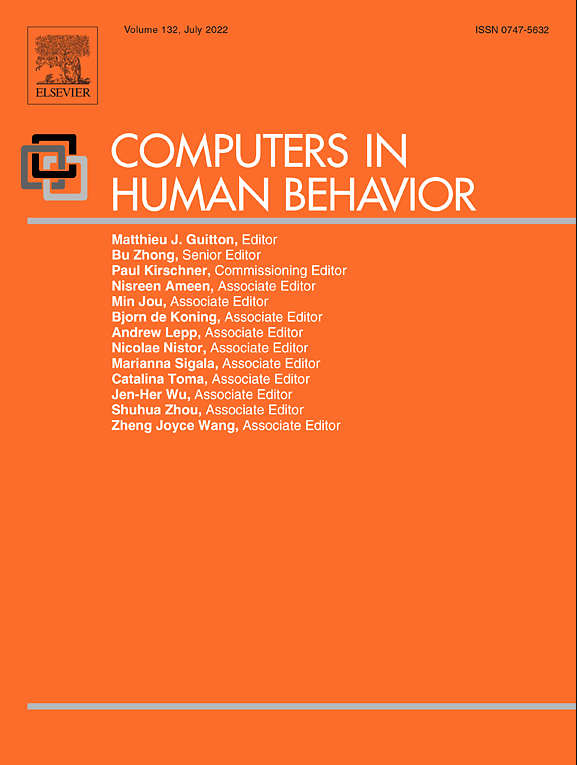
Computers in Human Behavior (CHB) - Volume 25, Issue 3 论文列表
| 点击这里查看 Computers in Human Behavior 的JCR分区、影响因子等信息 |
| 卷期号: Volume 25, Issue 3 |
| 发布时间: May 2009 |
| 卷期年份: 2009 |
| 卷期官网: https://www.sciencedirect.com/journal/computers-in-human-behavior/vol/25/issue/3 |
本期论文列表
Editorial Board / Publication information
Special issue: Enabling elderly users to create and share self-authored multimedia content
An interactive tool to promote musical creativity in people with dementia
Home-based communication system for older adults and their remote family
Understanding the factors affecting online elderly user’s participation in video UCC services
Digital circles of support: Meeting the information needs of older people
Age differences in online social networking – A study of user profiles and the social capital divide among teenagers and older users in MySpace
Co-creation and user-generated content–elderly people’s user requirements
Creating a conversational context through video blogging: A case study of Geriatric1927
The relationship between religious expression and outcomes in online support groups: A partial replication
Too real for comfort? Uncanny responses to computer generated faces
Sitting at the virtual poker table: A prospective epidemiological study of actual Internet poker gambling behavior
Adolescent self-control and music and movie piracy
Progression of mental models throughout the phases of a computer-based instructional simulation: Supportive information, practice, and performance
Impact of temporal extension, synchronicity, and group size on computer-supported information exchange
Internet testing: A natural experiment reveals test score inflation on a high-stakes, unproctored cognitive test
Slovak high school students’ attitudes to ICT using in biology lesson
A randomised controlled trial of a self-guided internet intervention promoting well-being
Exploring success factors of video game communities in hierarchical linear modeling: The perspectives of members and leaders
Internet differential pricing: Effects on consumer price perception, emotions, and behavioral responses
The role of task-technology fit as users’ motivation to continue information system use
Attention guidance during example study via the model’s eye movements

